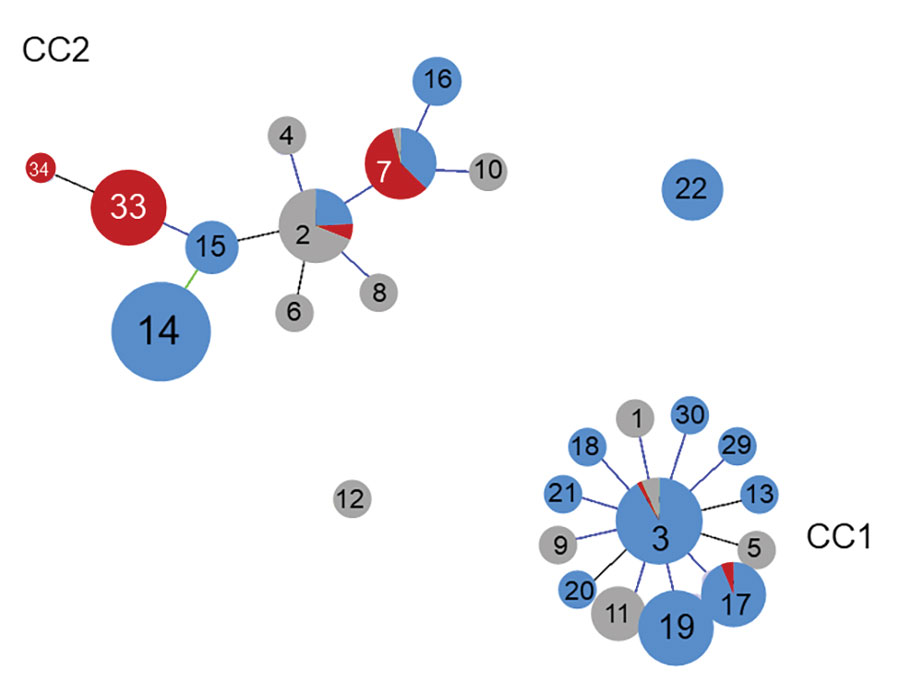Volume 26, Number 9—September 2020
Dispatch
Sequence Type Changes Associated with Decreasing Macrolide-Resistant Mycoplasma pneumoniae, Japan
Figure 2

Figure 2. Relationships between CCs and STs for Mycoplasma pneumoniae isolates determined by goeBURST (http://www.phyloviz.net), Japan. Data were obtained from isolates including 470 strains from Japan during 2002–2019 and 62 strains isolated in the United Kingdom, the United States, China, and France. Blue circles indicate isolates from Japan during 2002–2016; red circles indicate isolates from Japan during 2018–2019; and gray circles indicate isolates from the United Kingdom during 1967–2010, the United States during 1944–1994, China during 2014, and France during 1981. Among all isolates, 26 STs were identified. CC, clonal complex; ST, sequence type.
Page created: June 09, 2020
Page updated: August 19, 2020
Page reviewed: August 19, 2020
The conclusions, findings, and opinions expressed by authors contributing to this journal do not necessarily reflect the official position of the U.S. Department of Health and Human Services, the Public Health Service, the Centers for Disease Control and Prevention, or the authors' affiliated institutions. Use of trade names is for identification only and does not imply endorsement by any of the groups named above.